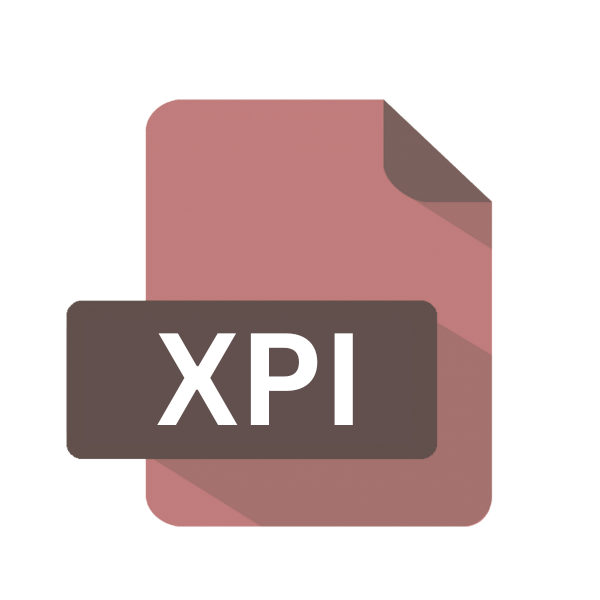.XPI File Extension

Cross-platform Installer Package
| Developer | Mozilla |
| Popularity | |
| Category | Plugin Files |
| Format | .XPI |
| Cross Platform | Update Soon |
What is an XPI file?
The .XPI file extension stands as a cornerstone in the realm of cross-platform software distribution, serving as a reliable installer package for various applications across different operating systems.
With its versatility and utility, understanding its nuances and capabilities becomes imperative for both developers and end-users alike.
More Information.
The .XPI format was conceived within the context of Mozilla Firefox, Mozilla’s renowned web browser. Its inception aimed to provide a standardized method for packaging browser extensions, enabling developers to distribute their creations efficiently.
Over time, its utility expanded beyond Firefox extensions to encompass various applications and utilities, solidifying its status as a versatile installer package format.
Origin Of This File.
Initially introduced as part of the Mozilla ecosystem, the .XPI file extension emerged in the early 2000s as a means to streamline the installation process of browser extensions and add-ons.
Its primary purpose revolved around simplifying the distribution and deployment of these enhancements across multiple platforms, ensuring a seamless user experience.
File Structure Technical Specification.
At its core, the .XPI file format adheres to a structured layout designed to encapsulate the necessary files and metadata required for installation.
Typically, it comprises a compressed archive, often utilizing the ZIP format, containing the application’s files alongside manifest files detailing installation instructions and dependencies.
This structured approach ensures compatibility across different platforms and facilitates effortless installation procedures.
How to Convert the File?
Converting .XPI files typically involve extracting their contents rather than converting them to a different file format.
Since .XPI files are essentially compressed archives containing application files and metadata, the conversion process primarily revolves around decompressing them to access their contents. Below are the steps to convert .XPI files:
1. Extracting Contents:
- Locate the .XPI file on your computer.
- Right-click on the .XPI file.
- Choose an option like “Extract” or “Extract Here” from the context menu. This action will decompress the .XPI file using an archiving tool such as WinRAR, 7-Zip, or the built-in decompression utility in your operating system.
- Once the extraction process is completed, you will have access to the contents of the .XPI file.
2. Accessing Extracted Files:
- Navigate to the directory where the .XPI file was extracted.
- You will find the application files and metadata contained within the extracted folder.
- Depending on the contents of the .XPI file, you may encounter executable files, scripts, configuration files, and other resources necessary for the application.
3. Utilizing Extracted Files:
- After extracting the contents of the .XPI file, you can utilize the extracted files based on your requirements.
- If the .XPI file contains a browser extension or add-on, you can install it in the respective browser by following the installation instructions provided by the developer.
- For other types of applications, you may need to run setup or installation scripts, execute executable files, or follow specific installation procedures outlined in accompanying documentation.
4. Optional: Repackaging or Modification:
- In some cases, you may wish to modify or repackage the extracted files before use.
- You can edit configuration files, scripts, or other resources as needed.
- To repackage the modified files, you can create a new archive using an archiving tool and ensure it adheres to the required format for distribution or installation.
Advantages And Disadvantages.
Advantage:
- Cross-platform Compatibility: .XPI files are designed to function seamlessly across various operating systems, eliminating compatibility issues.
- Streamlined Installation Process: With its self-contained nature, .XPI files simplify the installation process, requiring minimal user intervention.
- Enhanced Distribution: Developers benefit from the ease of distributing their applications, thanks to the standardized packaging offered by the .XPI format.
Disadvantages:
- Limited to Specific Applications: While versatile, .XPI files are primarily associated with browser extensions and add-ons, limiting their applicability to other software categories.
- Dependency Management: In cases where applications rely on external dependencies, managing and resolving these dependencies within .XPI packages can pose challenges.
- Security Concerns: As with any installer package, .XPI files may present security risks if not obtained from trusted sources, necessitating caution during installation.
How to Open XPI?
Open In Windows
- Locate the .XPI file on your Windows system.
- Right-click on the file and select “Extract” to decompress its contents using an archiving tool like WinRAR or 7-Zip.
- Once extracted, you can access and execute the application files as needed.
Open In Linux
- Launch a terminal window on your Linux distribution.
- Navigate to the directory containing the .XPI file.
- Use the command line to extract the contents of the .XPI file using utilities like unzip.
- Once extracted, you can access the application files for installation or execution.
Open In MAC
- Locate the .XPI file in Finder on your macOS system.
- Double-click on the file to automatically extract its contents using the built-in Archive Utility.
- After extraction, you can access and run the application files as required.
Open In Android
- Transfer the .XPI file to your Android device via USB or file-sharing methods.
- Install a file manager app from the Google Play Store if not already available.
- Use the file manager to navigate to the directory containing the .XPI file.
- Tap on the file to extract its contents and proceed with the installation process as prompted.
Open In IOS
Due to iOS’s closed ecosystem, direct installation of .XPI files is not supported. However, you may explore alternative methods such as utilizing third-party file management apps or jailbreaking your device, although the latter is not recommended due to security risks.
Open in Others
For other operating systems not covered above, the general approach involves extracting the contents of the .XPI file using compatible archiving utilities and accessing the application files accordingly.













